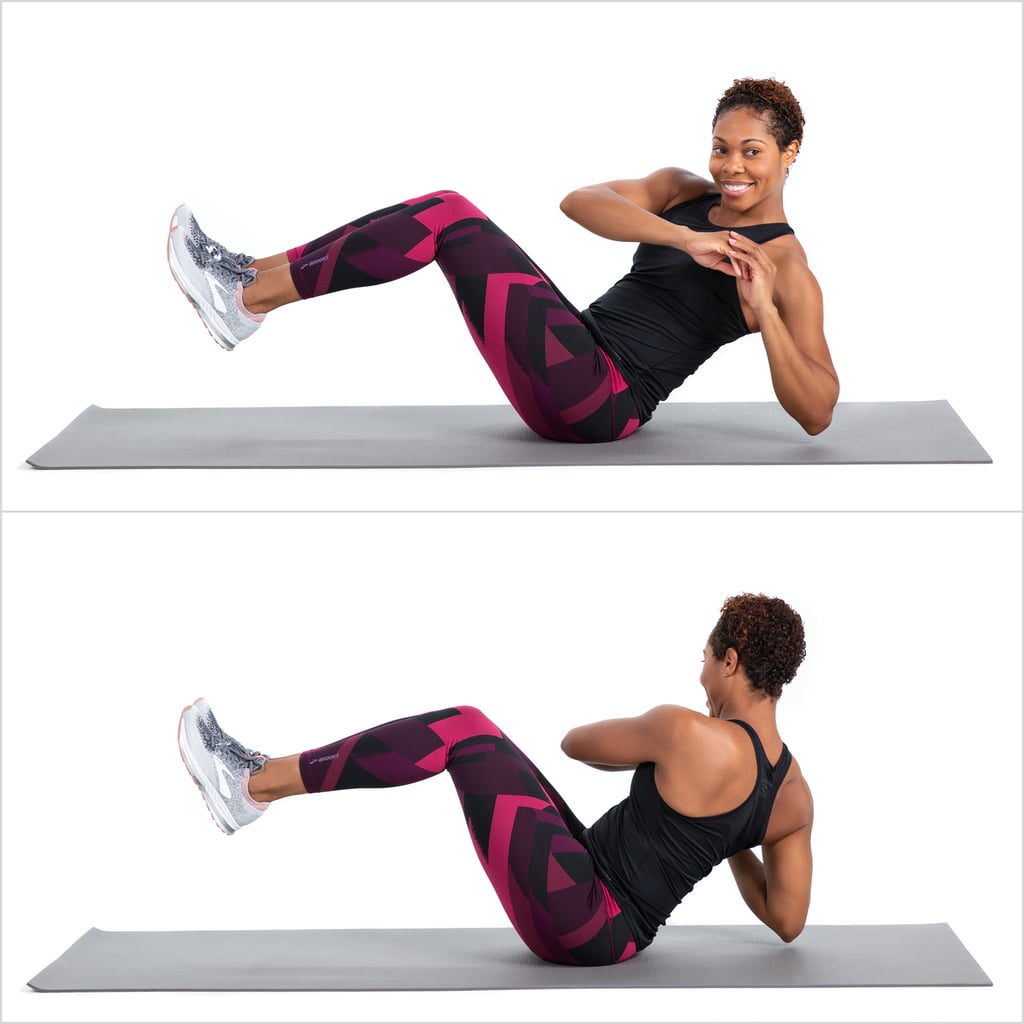

Stress on the low back is the number one thing to look for and avoid with this move, according to Hudock. You also always have the option to amp up your reps as an extra challenge. In fact, you can even pause in the center (rather than continually twist from one side to the other) to make the movement more difficult, she adds. “Keep it slow, keep it controlled,” Hudock says. Whatever you do, don’t use speed as a progression.
Russian twist exercise how to#
(Note: Hudock actually advises keeping your feet on the ground for stability-and in order to isolate the core-even while doing more advanced variations of the Russian twist.) How To Level Up Russian Twists You can even start by holding yourself in that starting position-when you feel ready, add in that controlled rotation. Keep your heels on the ground, Hudock suggests, and just do a low number of reps. Remember how holding yourself in that position requires a lot of core strength? If you aren’t quite there yet, Hudock recommends mastering stabilizing exercises like planks or dead bugs first.Īnd when you are ready to try out the Russian twist, start with a modified, bodyweight-only version of the exercise. But if your hip flexors feel strained-a sign your core is exhausted and no longer engaged-Donohoe recommends ditching the weight and/or lowering your reps. This engages your glutes and core but shortens the range of motion, says Donohoe.

17 Yoga Moves That Will Help You Sculpt Abs.You’ll want to do both types of movements within a well-rounded core regimen. On the other hand, “the benefit of doing rotational movements can be increased power,” she says. “Anti-rotation can help us prevent injuries because we are teaching ourselves how to ‘brace’ and create stable trunks,” she explains. Plank variations can be good anti-rotation movements, or exercises that require you to prevent yourself from rotating, Hudock says. Basically, this comes back to that rotation you’re doing with Russian twists. The move complements your go-to planks.Russian twists, on the other hand, require you to move in the less common transverse plane. There are lots of exercises that require forward and backward movement (think: crunches), she adds. “Frontal is side-to-side, sagittal is forwards and backwards, and transverse is rotation,” Hudock explains.

To understand why, first review the three planes of motion: frontal, sagittal, and transverse. It can help you add good variety to your exercise regimen.Hudock says this move can work your legs and hips, too. It provides a bonus leg workout (and more!).For that reason, beginners may want to modify the move or master others first. Simply holding yourself up in the starting position for the Russian twist takes a lot of core strength, Hudock says. It strengthens and challenges your core."It’s a total core exercise that also works your balance, builds stability in your spine, and trims your mid-section all at once," says Donohoe. Russian twists strengthen your core, obliques, and spine. Reps/sets for best results: Aim for two to three sets of 10 to 12.
Russian twist exercise pro#
Pro Tip: It’s important to move slowly, Hudock explains, rotating through your obliques, upper back, and shoulders while stabilizing and protecting your lower back from strain. Don't disengage your core when fatigue sets in. (Demo’d by trainer Anna Victoria!) Remember to move slowly and breathe, says Donohoe. Balancing here and keeping your legs stationary, twist your torso from side to side.Lean back slightly so your torso and legs form a V-like shape, bracing your abdominal wall to engage your core.Sit on the floor and bring your legs out straight.


 0 kommentar(er)
0 kommentar(er)
